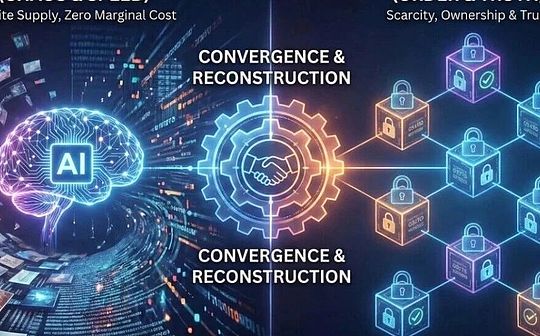
Author: IGNAS | DEFI Research Translation: Shan Ouba, Bitchain Vision Realm
Studies have shown that 91% of the tokens in cryptocurrencies in 2014 have now died.It is estimated,Nine -tenth of the blockchain projects will also fail, and the average life expectancy of tokens is only 15 months.
In the case of such a low rate of success, I want to share my thoughts to identify projects that may survive and flourish.
>
The problem is that the project is too much, but our time and energy are limited.It takes a few days to study a tokens is great, but cryptocurrencies have developed rapidly, so it is necessary to save some energy for decision -making.
This is why I focus on the real token economics.
Start with “why”
According to Sidine, “Few or companies can clearly clarify the reasons why they do something.”
This is more suitable for encryption projects and its tokens.It seems that the project will emerge every day according to the leading narrative at that time.
I believe that it is very important to spend some time before investing in token.
>
This can be decomposed into three problems:
1. Why does the project issue tokens?
2. How does it work?
3. What function does it have?
Find the real reason for the existence of tokens
In fact, I believe most projects do not need tokens to run.Think about whether the following items really need tokens to run?
-
DEX and DEX polymer
-
Mortgage stable currency
-
Borrowing agreement
-
Income polymer
-
wallet
For example, Sushiswap’s vampire attack may force Uniswap to issue their own tokens.$ Uni has been troublesome for a while, but thanks to the potential income sharing, it has finally started, and UNI has begun to make sense.
In any case, most projects issue tokens.The reason is obvious:
-
Fundraising
-
Establish a community
-
Guide liquidity
Many agreements are only regarded as fundraising tools (obviously, they will not say so).
But great projects are those who have deeper tokens.These are all thoughtful functions, and they are not so obvious:
-
Allocate ownership and power (who determines which tokens are included in AAVE or where are the rewards/how to allocate it?)
-
Risk management (Who evaluates risks, who should be responsible if the agreement is not credible?)
-
Future utility options (initially launched as community/fundraising tools, but adding functions will be added to the community by decentralized protocols and planned by planning).
Before investing, first understand the real reason for the project issuance tokens, not just for fundraising the goal.
Analyze how the token ecosystem works
The “how” part may be complicated, especially for projects using innovative game theory.
Each project provides token economics explanations in its documentation.Finding “how” is easy to operate, and understanding thoroughly is more challenging.
I believe that the best token design has a virtuous circle to promote the adoption, use and appreciation of the tokens.
This will create an ecosystem of a positive feedback cycle and strengthen the token.
>
CURVE’s Vetokenomics may be one of the most replicated designs: VECRV encourages long -term holding, motivating liquidity, and attracting other protocols to build on CURVE.
However, please keep in mind that the tokens are different in terms of complexity, and some deliberately complexity to deceive investors, while others provide unique innovation and create value.
Your challenge is to distinguish between the two.
after all,”If you don’t know where the income comes from, then you are the benefits.“
Pledge may be the simplest and most useful feature of the tokens.If the project manages the user ecosystem airdrop tokens, this will be a powerful value proposition.For example, consider the ATOM of Celestia’s Tia or COSMOS.
However, sometimes such a unique and different tokens appear, so that it has changed the trajectory of the industry.The originality of token economics can promote the development of the industry forward and open a new bull market.
Find tokens that are valuable to holders
After understanding the root cause of the existence of tokens and its operation methods, it is time to find out how to create value for investors.We don’t want tokens without any use cases.
example:
-
Payment fee
-
Income sharing
-
Expense discount
-
Governance agreement
-
Used for liquidity/risk management
The most popular example is the sharing of agreement cost income.Or some projects have integrated token into the core function of the agreement.
For example, Pendle and its VEPENDLE design is on the rise.The LP APY and some protocol revenue increased by VEPENDLE reward users.And because PENDLE successfully positioned itself as a DEFI income/points mining center, the token benefited from the growth of the adoption rate/TVL and other indicators.
>
Vependle also gives users the right to vote to determine incentive allocation.All in all, Vependle’s token economics design is simple, and the value growth is clear.
Evaluation requirements and supply mechanisms
Evaluate the ratio of market value (MC) to completely dilute valuation (FDV).
The ratio of low market value/complete dilution valuation means that it will release more to the market, thereby applying downward pressure on the price.
>
Consider who will buy these newly issued tokens!
I agree that FDV in the short term is a popular statement.Take a look at WorldCoin’s recent surge!
>
But you may not want to hold these tokens when the bear market strikes.In the end, the real demand should offset the increase in supply.
My current idea of this cycle is in the short term to the middle period: as long as the main unlocking is 6 months or longer, the market value is more important than FDV.
Evaluate token distribution
Evaluate the long -term potential of the tokens by understanding the token distribution.Nothing is a simple answer to the best distribution ratio.It varies from the project and the leading position at the time.
Remember those teams allocated 0% of the “fair start” tokens?
>
Everyone pays attention to this fact. Too many team allocation will lead to selling.
However, there are too few team distribution: Too few will weaken the financial motivation of team building.
Andre Cronje wrote in his blog article “Building a bad in DEFI (part 2)” is a mistake to hand over 100% to the community.
>
Except for responsibility and expectations, I have no rewards or benefits.Don’t do this, I’m so stupid.-Andre Cronje
It seems that the trend of “fair launch” is currently outdated.The most recent attempt is BRC20 toke, but 99% of them have quickly expanded and disappeared …
Long -term holding and short -term holding methods
I focus on medium and long -term holdings, so I look for tokens with long -term linear unlocking timetable (no large cliff unlock) and MC/FDV ratio than 0.8.The team and VC allocate about 30%.
If your focus is on short -term transactions, you should master the tokens analysis tool:
• · EtherScan: Check the proportion of whale holding tokens.You should also check whether the tokens are locked in a smart contract or stored in a single wallet address.
>
(Example: The top 100 holders hold a total of 89% of SNX, but in fact 32% are locked in pledge)
• Dune: It is used for special project dashboards or communities to build instrument boards, such as Defi Mochi.
• NANSEN: Find who holds tokens and where they flow.
Evaluate actual liquidity
Check whether there are real needs for tokens and whether it can be purchased.
Don’t just rely on the transaction volume, because the cryptocurrency exchange is notorious because of “cleaning transactions” -buying tokens from yourself to create a demand hallucination.
Check the depth of liquidity on Coingecko or Coinmarketcap to evaluate the true liquidity.
Sometimes there are unique token design, but low liquidity means that large investors who can push up prices cannot enter.
>
The function of the tokens ranks at the end
The “what” part is simple -it is the function of tokens, such as voting, pledge, VIP access, in -application payment or destruction of each transaction.
According to my experience, I do n’t know why “why do this” projects usually focus on providing as many functions as possible.There are complex graphics and designs on the website, which attracts you to buy immediately.
However, don’t be confused by simply marketing -see how these functions support the development of agreements and create real value for token holders.
I like this simple method of Crypto Linn, that is, investing in a wealthy agreement on users.A simple and powerful framework.
>
You only need to use one or three killers.
Simplified method
It is found that the next high -quality tokens may be a challenging task, especially when a large number of new tokens emerge every day.
It is difficult to keep up with all new projects and conduct thorough research on each project.
This is why I make this guide short and easy -to -understand -it can use 6 operating points to summarize:
Objective: Understand the reasons for the existence of tokens and whether it is worth your time.
Function: Check the potential of the flywheel effect and long -term success.
Value: Don’t just look at the fancy functions, but pay attention to the actual value of token holders.
Dynamic: Considering token distribution, market value/complete dilution valuation ratio, unlocking and purchasing pressure.
Liquidity: Check the depth of liquidity and demand to evaluate the value and growth of the token.
Analysis: Master the tools in order to make wise decisions for investment and selling.







